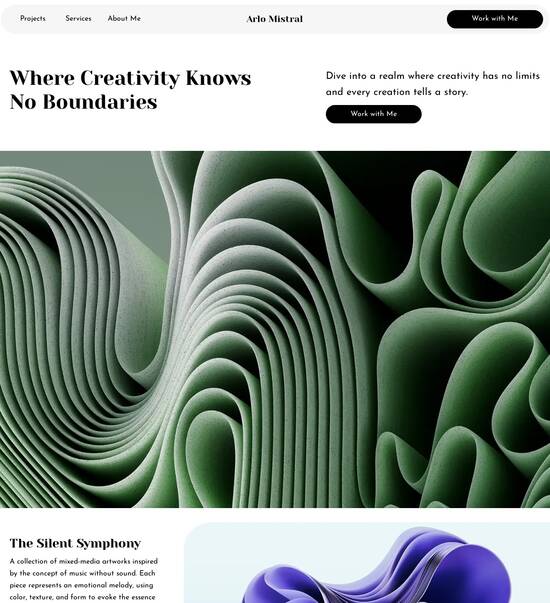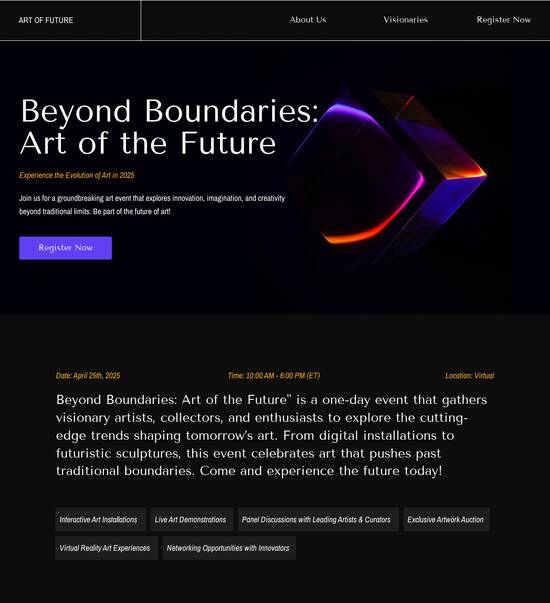
HTML page template with interactive cancellation form
Explore Similar TemplatesAbout template
Use HTML page templates with interactive cancellation form and make your communications easy and transparent. Try our solution today.
Recommended templates

Easy to build without coding
With the intuitive drag-and-drop builder, anyone on your team can create high-converting pages without any knowledge of code or design. Make enhancements to your landing page with custom widgets using Javascript, HTML/CSS, or third-party scripts.

Multiple layouts for any industry and goal
Select from 500+ landing page layouts built to boost conversions across industry-specific scenarios. Customize them by adjusting fonts, adding images, and generating on-brand content with the AI assistant. Quickly scale with Instablocks® and Global Blocks that you can save, reuse, and update globally.

Loads fast and looks polished on any device
Every template is responsive, which means they present professionally on any device and load blazingly fast with our Thor Render Engine. You can also power them up with Google AMP technology to deliver an unparalleled mobile experience and drive higher conversions.

Robust analytics & experimentation
Get real-time updates and reporting across all your devices, showing the number of visitors, conversions, cost-per-visitor, and cost-per-lead. Launch AI-powered experiments, run A/B tests, and use heatmaps to analyze user behavior, then optimize your landing page to maximize conversions.







Easy to build without coding
With the intuitive drag-and-drop builder, anyone on your team can create high-converting pages without any knowledge of code or design. Make enhancements to your landing page with custom widgets using Javascript, HTML/CSS, or third-party scripts.
Multiple layouts for any industry and goal
Select from 500+ landing page layouts built to boost conversions across industry-specific scenarios. Customize them by adjusting fonts, adding images, and generating on-brand content with the AI assistant. Quickly scale with Instablocks® and Global Blocks that you can save, reuse, and update globally.
Loads fast and looks polished on any device
Every template is responsive, which means they present professionally on any device and load blazingly fast with our Thor Render Engine.
Robust analytics & experimentation
Get real-time updates and reporting across all your devices, showing the number of visitors, conversions, cost-per-visitor, and cost-per-lead. Launch AI-powered experiments, run A/B tests, and use heatmaps to analyze user behavior, then optimize your landing page to maximize conversions.
All the features you need to build lead-generating landing pages
Explore more featuresLearn how to build top-performing landing pages for any goal
FAQs
Leading the way in building high-performing landing pages





A step-by-step guide to using Instapage for optimal landing page creation
Instapage's landing page platform is designed to accelerate your marketing efforts. Its intuitive tools empower you to create high-converting landing pages effortlessly, bridging the gap between your marketing campaigns and your audience's needs. This guide will walk you through the steps to effectively utilize Instapage for maximum ROI.
Understanding the essentials of landing page creation
To begin your landing page journey, it's crucial to grasp the foundational elements that make a page effective. You need to focus on conversion-oriented design, powerful copy, and strategic layout. Here are the essential components:
- Clear call-to-action (CTA): Make it prominent to guide users towards your goal.
- Visually appealing design: Use colors and images that align with your brand.
- Compelling content: Deliver a clear message addressing user pain points.
Step 1: Choosing the right template
Instapage offers over 100 high-converting templates tailored for diverse needs. Start by selecting a template that resonates with your campaign's objectives. Consider factors like the type of audience you are targeting and the key message you want to convey.
Step 2: Personalizing your landing page
Personalization plays a pivotal role in engaging your audience. Through Instapage, you can dynamically customize visual elements and text based on user data. This ensures that your landing pages resonate well with the specific segments of your target audience.
- Dynamic text replacement: Tailor messages based on visitor behavior.
- Ad alignment with instapage ad maps: Ensure ads link to relevant landing pages.
- Engagement tracking: Use analytics to measure the impact of your personalization efforts.
Step 3: Optimizing for conversions
Once your landing page is live, the work isn't over. Utilizing Instapage's built-in analytics, you can continuously test and optimize your pages. Regularly reviewing performance metrics will help you understand what's working and what needs adjustment.
- A/B Testing: Test different versions to find what converts best.
- Heatmaps: Analyze visitor interactions on your page to improve layout.
- Analytics Dashboard: Monitor traffic, conversion rates, and engagement levels.
By following these steps, you can create effective landing pages that not only attract traffic but also drive conversions and boost your marketing ROI.
Ready to take your marketing campaigns to the next level? Sign up for Instapage today and unlock the potential of optimized landing pages.
HTML page template with interactive cancellation form
Understanding the importance of an interactive cancellation form in modern websites
Cancellation forms are essential tools for any business operating online. They provide a straightforward way for users to opt-out of services, thereby maintaining transparency and respect for user choices. In the digital era, where customer preferences shift rapidly, having an effective cancellation system can significantly influence user retention and trust. A seamless experience when canceling a service can differentiate a company from its competitors and shows that the business values user feedback.
User experience plays a crucial role in determining trust levels with a website. A poorly designed or overly complicated cancellation form may frustrate users, leading to negative perceptions that could harm brand reputation. On the other hand, a well-crafted interactive cancellation form can foster goodwill, encouraging users to share their thoughts, in turn providing valuable insights for service improvement. This demonstrates that the business cares, potentially paving the way for re-engagement in the future.
Crafting an HTML page template: key elements
An effective HTML page template is structured around several essential components. At the top of the page, a well-designed header is crucial. It should include the company logo for brand recognition, a navigation menu for easy browsing, and any other branding elements that reflect the organization’s identity. This ensures that users feel reassured when navigating.
Next is the main content area, where the introduction and purpose of the cancellation form should be clear. Supporting details about how feedback will be used can enhance user trust. Finally, a footer should provide contact details, links to privacy policies and terms of service, ensuring users can find additional information easily. Each of these areas contributes to a clean user experience.
Header
Includes logo, navigation, and branding.
Main content area
Defines the cancellation form's introduction and purpose.
Footer
Contact information and links to privacy policies or terms of service.
Moreover, the importance of clean code and a semantic HTML structure cannot be overstated. This approach not only improves search engine optimization (SEO) but also ensures the form is accessible to all users, including those with disabilities. Responsive design is another critical factor; the template should function properly across various devices and screen sizes, facilitating ease of use for every potential user.
Designing an engaging cancellation form: elements to consider
User-centered design should drive the creation of cancellation forms. Every aspect of the form must consider the user’s needs and comfort. Key form fields should include user identification elements such as name and email address to facilitate any necessary follow-up. It is equally important to gather the reason for cancellation via dropdown or checkbox options, as this data can be valuable for improving services.
Additionally, an area for additional comments should be included, allowing users to provide free-text feedback. Leveraging visual cues can enhance usability; for instance, thoughtful use of colors, icons, and typography can lead users effortlessly through the cancellation process. These choices not only impact aesthetics but can also simplify navigation and clarify the purpose of different fields.
User identification
Essential fields for name and email address.
Reason for cancellation
Dropdown or checkbox options to specify the cancellation reason.
Additional comments
Free text area for users to share thoughts.
Enhancing user experience through interactive elements
Integrating interactive features into cancellation forms can significantly improve user experience. Real-time validation of inputs prevents errors and ensures that users provide the necessary information before submission, preventing frustration. Moreover, dynamic fields can adapt based on user choices—if a user indicates 'service dissatisfaction,' the form can prompt them for more specific details. This capability provides a tailored experience that respects user preferences.
Tooltips and help texts can guide users at any point in the form, ensuring they understand what is required and alleviating stress. For common cancellation reasons, auto-suggestions could facilitate quicker responses, making the process more efficient. Each of these interactive elements not only enhances usability but reinforces a positive perception of the brand overall.
CSS styling: creating a visually pleasing and functional design
Creating a cohesive visual style across the cancellation form and template is vital. Utilizing a color palette that aligns with the brand helps maintain consistency and promotes brand recognition. Font choices are equally important; they should prioritize readability while considering accessibility for all users. This alignment cultivates a user-friendly experience, making the form approachable.
Responsive CSS techniques must be applied to ensure that all form elements work seamlessly across devices. This not only includes ensuring the fields and buttons are appropriately sized but also that the overall layout adapts without compromising functionality. Advanced styling options such as animations and transitions can bring the form to life, engaging users further as they interact with it.
Templates and customization: flexibility for diverse use cases
Numerous existing templates available for cancellation forms can serve as excellent starting points. These templates allow businesses to implement a cancellation process rapidly without starting from scratch, ensuring essential functionalities are in place. The ability to customize these templates for specific business needs further enhances their versatility.
Different industries, such as SaaS or online subscription services, will have unique requirements, and adaptable templates cater to these variations efficiently. A step-by-step guide on modifying templates typically involves selecting a base design that reflects the brand, adjusting key fields, and incorporating additional features as necessary, ensuring the cancellation process remains effective while also meeting user expectations.
Data management considerations: storing user feedback effectively
Handling cancellation feedback respectfully is crucial for businesses. Best practices include ensuring user privacy and maintaining compliance with data protection regulations like GDPR. It is essential to implement clear processes for collecting, storing, and analyzing feedback data, ensuring that users feel their opinions are valued while also fostering future improvements.
Integrating with backend systems can provide a seamless user experience. Technologies such as PHP, Node.js, or third-party services can capture form submissions efficiently, enabling businesses to respond to user insights meaningfully. Thoughtful data management not only helps retain valuable information from the cancellation process but also transforms negative experiences into opportunities for improvement.
Writing a user-friendly confirmation message
The follow-up communication following a cancellation is just as crucial as the cancellation process itself. A well-crafted confirmation message serves to acknowledge that the users' request has been processed and can help maintain a positive rapport. This message can include details about their cancellation, a brief survey for feedback, and potentially, offers or links to promotional content that could entice the user to return.
Sample templates for confirmation emails often combine a warm thank-you note and concise information about next steps. By encouraging future engagement, businesses keep the door open, reminding users of the value they provided during their relationship with the service. This approach not only enhances user satisfaction but may also result in re-engagement down the line.
Case studies: examples of successful implementation
Case studies of businesses that have adopted interactive cancellation forms reveal compelling insights into their impact. For instance, a SaaS company might report improved retention rates and customer satisfaction due to enhanced clarity and ease of use in their cancellation process. User testimonials further support these findings, providing real-world feedback that highlights how streamlined user experiences contribute to overall business success.
Success metrics and analytics can showcase the positive implications of implementing these forms. Businesses can track reductions in cancellation-related queries or increases in user feedback submissions, leading to actionable insights that drive improvement initiatives that directly address user concerns. These case studies demonstrate that investing in cultivating a thoughtful cancellation process can yield significant returns in user loyalty.
Troubleshooting common issues with interactive cancellation forms
Despite the best efforts in design, cancellations forms can present challenges. Potential pitfalls often include overly complicated layouts or unclear instructions that lead to user frustration. Identifying these issues early is crucial, and businesses should monitor user feedback closely to refine their forms continuously. It may also be helpful to conduct usability tests to gather data on how real users interact with the cancellation process.
Optimizing performance is also key. This can involve streamlining code for faster load times, ensuring all interactive elements function well, and addressing any mobile responsiveness concerns promptly. Establishing a feedback loop allows for ongoing analysis, ensuring the cancellation methodology evolves with user expectations and technological advancements, ultimately leading to an improved user experience.
Future trends: innovations shaping the landscape of cancellation forms
The future of cancellation forms is likely to be influenced by technological advancements and shifting user preferences. Innovations such as artificial intelligence and machine learning may play a role in predicting user behavior and preferences, potentially customizing cancellation processes in real-time to suit individual needs better. The use of these technologies could enhance form capabilities, driving personalized experiences.
Additionally, the potential for augmented reality (AR) and virtual reality (VR) technologies could reshape traditional forms, making the cancellation process immersive and engaging. This evolution in interactivity underscores the importance of remaining adaptable to user needs and constantly innovating to enhance form efficiency. Businesses that keep pace with these trends may find themselves better equipped to foster sustained user trust and engagement despite cancellations.
Ready to skyrocket conversions?
Supercharge your ad campaigns with high-performing landing pages
Get started














